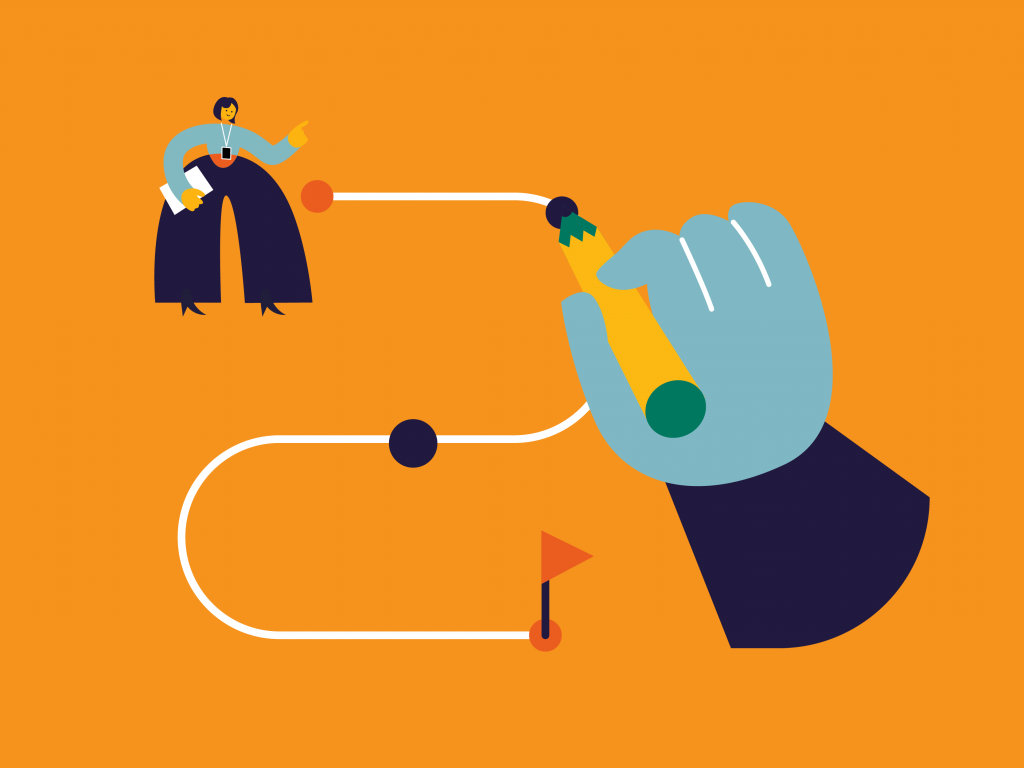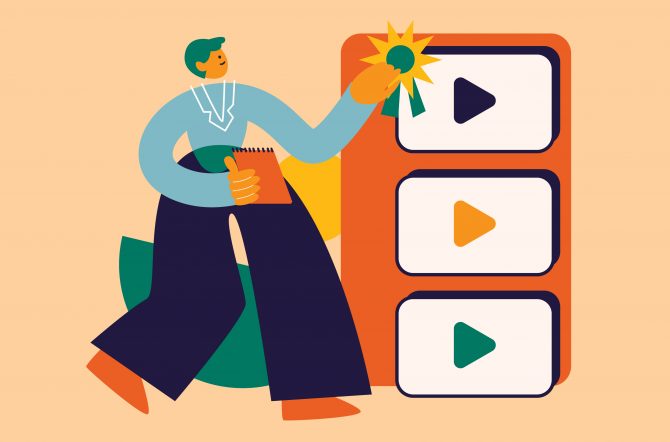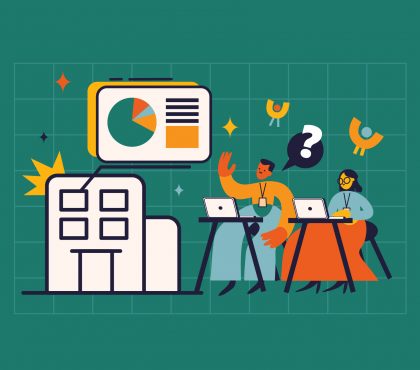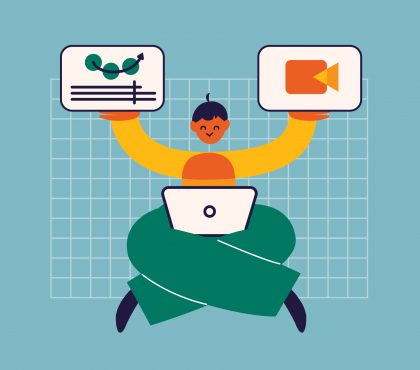How do you know animation is interesting or boring, smooth or choppy? Well, it’s not easy to evaluate animation quality as there are many factors to consider. But don’t worry—whether you’re just watching for fun or considering animations for your own projects, there are a few key things that can help you tell the difference.
What is This Animation Quality Guide About?
It is not easy to tell the animation quality of different types, especially if you are not an insider in the animation industry but a clueless instructional designer or educator.
Yeah, the high-quality animation is not that hard to spot, you may say! You are right if you think Walt Disney or DreamWorks animations are amazing! However, let’s be real. Those Incredibles are millions of dollars in investments. Hence you could hardly reach such quality without an enormous budget. But we do not need the “Cartoon Network” standard to create beautiful yet effective educational animations. The main purpose of an animated learning video is to deliver knowledge clearly and engagingly. Sparkles or unicorns may come as unnecessary (unless you build an online course on Defense Against the Dark Arts for Hogwarts).
Then if the standard is not “Cartoon Network”, how can we identify a good 2D animation?
In this article, we will guide you through:
- What makes an animated learning video?
- 4 common types of 2D animation in the eLearning industry
- How to tell the quality of different animations
I hope you will learn valuable insights to make the right decision for your budget. Then you would have more explicit expectations and requirements for an effective partnership with an animated video production company.
What Makes an Animated Learning Video?
Firstly, before we start, you must understand what animated learning videos are and how they differ from advertisements and movies.
- Animated learning videos serve an educational purpose, conveying information to various audiences. An advertisement, on the other hand, tries to promote a product to a target audience, whereas a movie tells a story while focusing on its theme and meaning rather than educating.
- Animated learning videos don’t require twists and complex plots like the others. This genre’s selling point is not its wow factor but its educational values.
- The visuals in an educational animation are subpar compared to the other. All an animator needs to do is make it appealing enough to support the massive load of information it offers.
To make animated videos meet your purpose better, we recommend this article:
Make your online and hybrid course more engaging with simple animation guide, why not?
Ultimate Guide to Make Animated Educational Videos

Different Types of 2D Educational Animations
Before we jump off to the technical details of animations, you must understand that different types of animations have different standards. You cannot judge that a whiteboard animated video is poor in quality due to its lack of details. Whiteboard animations could engage learners as sophisticated hand-drawn animations do. As long as the videos stay consistent with the learning objectives, any type of animation would benefit the learning outcomes.
There are various types of animations in this digital world. You may have seen some of these common types:
2D Animated Cartoons
2D animated cartoons are those you see on Ted-ed. They inherit the techniques of traditional hand-drawn animations, which means the animators would have to draw every frame to illustrate the movements. Although technology has reduced the animators’ workload, 2D cartoons are time-consuming. The artists still have to proceed frame-by-frame then. The great effort, however, results in a smooth and dimensional work of animation.
Motion Graphics
Motion graphics appear everywhere in TV commercials, explainer videos, and educational videos. Motion graphics are much different from 2D animated cartoons. The animators don’t necessarily understand the body mechanics of acting, composition, or camera motion. They may not bother drawing 15-24 frames per second. In fact, artists use software like Adobe After Effect to animate elements on the screen: objects, text, and characters.
Motion graphics hence are less dimensional than 2D animated cartoons. Most animation elements stay in a flat environment since the movements are generated from the software.
Stop-motion
Stop-motion is not the most popular in the animation world. They are somewhat like 2D animated cartoons. To give the illusion of movement, the artists take a photo of an object and then another shot of it moving a little bit. However, the difference is they require the animators to set up the objects, characters, and backgrounds in the real environment rather than the digital workspace. Stop-motions hence are time-consuming and difficult to express complicated concepts.
Whiteboard Animation
If you have seen those famous YouTube videos by ASAP Science, you must have acknowledged what whiteboard animations look like. The videos present a hand drawing on board with text and audio narration. The details are minimalized to strengthen the storytelling. And yes, the essential part of whiteboard animations is storytelling. The design is pure doodles on board, so simple that one with no animation background could create this type of video. A more advanced version of whiteboard animated videos includes more color and movements to enhance the uniqueness and interaction.
Recommend reading:
Animation Quality Guide: What Makes a GOOD Animation?
Now that you’ve understood animated learning videos, it’s time to take it up a notch. There are mainly 3 aspects to judging animation quality, and for each of them, we will provide you with a few key questions you need to ask yourself every time you’re producing one.
1. Content
A script is the spine of the video. It shows how well the story is developed and later told. A good scriptwriter could transform your ideas, even just a fraction of the learning theory, into something engaging to learners.
Writing a script for educational purposes is challenging. For example, explaining how the heart pumps require many mind-blowing medical specialized words. To make it informational is no big deal, but the tricky part is making it funny and interesting enough to keep the audience engaged. You definitely don’t want to make it just another boring lecture!
A good script should fully convey the concepts while maintaining the balance between entertainment and information. Furthermore, good storytelling also plays a vital role since it keeps students focused and engaged in learning.
Here are a few questions you can ask yourself to make sure your script, as well as animation quality, is good:
- Is the plot relatable and relevant to the learning materials?
- Does the script explain the learning concepts to the fullest?
- Is the story straightforward with well-highlighted key points?
- Is the flow natural with a conversational tone?
- Do the characters have personalities that stay close to your students’ persona?

Recommend reading:
2. Visual Design
Beautiful design
The definition of “beautiful” depends on personal tastes. Your artwork may be breathtaking to some but appear completely bland to others. Although art is subjective, there are some guidelines you can follow to make it as appealing as possible to your audience.
Art isn’t supposed to look nice; it’s supposed to make you feel something. The trick is to fish out emotions from your audience. Sometimes you have to put yourself in your audience’s shoes and meet their demands. It all comes down to what your audience wants.
Originality
This is what makes a tailored animation stand out from one that’s made from a template. A high-quality animation follows the branding guidelines closely to convey a sense of style and exclusivity. This imprints the design in the students’ brains, making everything more memorable and unique.
That said, if originality isn’t your priority or you don’t have the resources to make it happen, you can use cloud-based animation software instead. Such software provides a massive library of characters and background elements to help you create a professional product. However, this is not a long-term solution since there will come a time when your work will demand more freedom.
To top it all off, here are some questions to ask yourself:
- Is the visual design eye-catching and polished enough?
- Does it fit your learners’ interests?
- Does it stay consistent with your branding image and message?

Recommend reading:
- Create animation storyboard for animated elearning video
- How to write a clear animated video production RFP (with free template)
3. Animation
Smooth. It has to be smooth. There is nothing that determines the animation quality more than smooth movements. The more technology is improved, the more viewers demand more from animation: they want reality. The best animation is one that captivates the fluid motions of real-life objects.
So how exactly does one make that happen?
In their book The Illustration of Life: Disney Animation, Disney animators Ollie Johnston and Frank Thomas explained the 12 principles of animation. The book is later deemed the animator’s Bible. So here is a short summary:
Even if you don’t have the budget or the time or plainly don’t prioritize that, try to learn from it as it will undoubtedly be beneficial to your future work.
And ask yourself this before finishing a product:
- Does the movement look smooth and fluid?
- What is your transition like?
Examples
Here are a few examples demonstrating the differences between a proper animated educational video and one for entertainment.
This is one of our products at F. Learning Studio – one of the best eLearning agencies. Amidst all the panic about the pandemic, we decided to make a short video to help educate people and keep them calm. You can clearly see a consistent theme throughout the video, which our animators originally created. This conveys our originality to viewers. The script is strictly professional, but it’s still casual enough to appeal to many viewers.
Here is an example of an animated short movie – it’s a favorite. You can see the quality of the artwork, and if you’re willing enough to sit through it, you will find yourself drowning in emotions. And this short animation doesn’t have any lines; it’s just a script with scenes and no dialogue.
Recommend reading:
Final Words
Now you should have clear directions for evaluating animation quality. Quality should always be your top priority, and since you are the one who decides that, it’s a plus when you have the essential knowledge. Finally, remember that choosing the right studio with a strong proven track studio like F. Learning Studio can help ensure high-quality animation. With 8 years of experience, we’re proud of crafting engaging and impactful animation!
Contact us now for tailored animated videos and boost your content!
- WhatsApp: (+84) 378 713 132
- Email: [email protected]
- Fanpage: https://www.facebook.com/f.learningstudio
- LinkedIn: https://www.linkedin.com/company/f-learning-studio/
Read more:
- F.Learning Animation Production Process: A brief description
- How much does an animation cost per minute: $100; $1,000 or $8,000?
- Top eLearning animated video production companies for your needs (2021 updated)

Sean Bui, the founder and creative director of F.Learning Studio, is a respected leader in the e-learning and multimedia production industry. With over 10 years of experience, he has dedicated his career to helping organizations create engaging and impactful learning experiences.
Under his leadership, F.Learning Studio has grown into a trusted partner for organizations in the education, healthcare, and corporate training sectors, producing over 2,000 minutes of educational animation.





